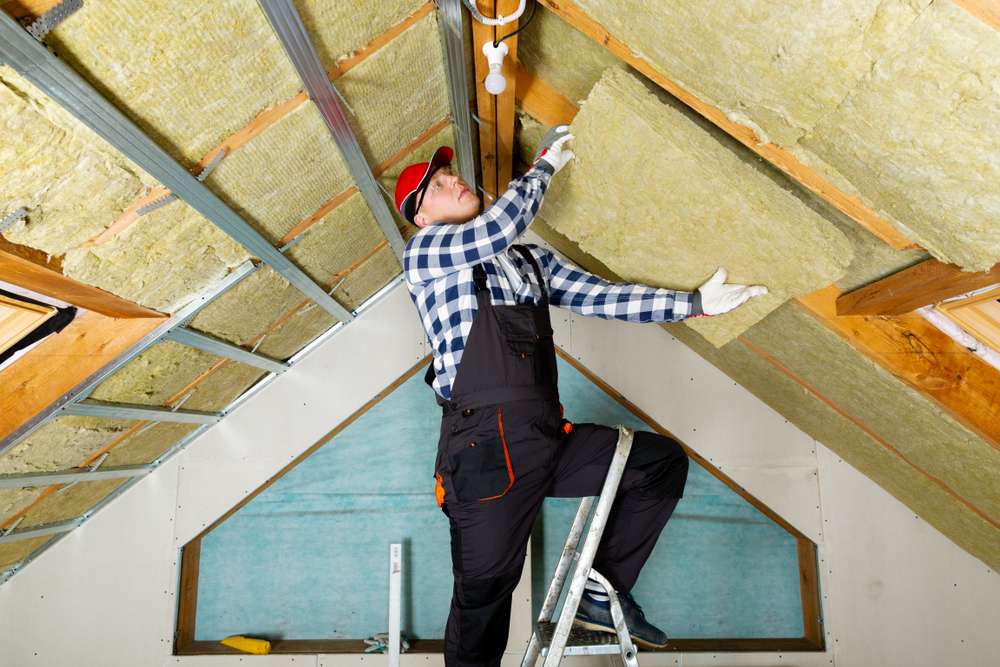Understanding Spray Foam Insulation Types And Energy Efficiency Benefits
Spray foam insulation is used to improve indoor comfort and reduce energy loss. Types of spray foam vary in application and performance, influencing how well they insulate walls, attics, or basements. Learning about these options highlights their role in energy efficiency.

What Are Spray Foam Insulation Kits for Sale and Home Use
Spray foam insulation kits designed for home use provide homeowners with the tools and materials needed to apply insulation themselves. These kits typically include two-component polyurethane foam systems that mix and expand when applied to surfaces. The kits come in various sizes, from small cans for minor repairs to larger systems capable of insulating entire rooms or attics. Most residential kits include protective equipment, application guns or wands, and detailed instructions for safe application. The foam expands to fill gaps, cracks, and irregular spaces that traditional insulation materials cannot effectively address, making these kits particularly valuable for sealing air leaks around windows, doors, and other building penetrations.
Spray Insulation Foam Kit and Insulation Foam Kit Price Considerations
The cost of spray foam insulation kits varies significantly based on coverage area, foam type, and kit complexity. Small aerosol cans suitable for minor sealing projects typically range from $15 to $40, while medium-sized kits covering 200 to 600 square feet generally cost between $300 and $800. Larger professional-grade kits capable of covering 1,000 square feet or more can range from $1,200 to $3,000. Two-component kits with closed-cell foam typically cost more than open-cell alternatives due to their higher R-value and moisture resistance properties. Kit prices are also influenced by brand reputation, included accessories, and regional availability. When evaluating insulation foam kit prices, homeowners should consider the cost per square foot of coverage and compare it to professional installation costs to determine the most economical approach.
Insulation Foam Kit for Walls and Common Applications
Spray foam insulation kits find numerous applications throughout residential properties, with wall insulation being one of the most common uses. These kits work effectively in both new construction and retrofit applications, filling cavity spaces in exterior walls, basement walls, and crawl spaces. The foam adheres to various substrates including wood, concrete, metal, and drywall, creating continuous thermal barriers. Common applications include sealing rim joists, insulating attic spaces, filling gaps around electrical outlets and plumbing penetrations, and creating vapor barriers in moisture-prone areas. The expanding nature of spray foam makes it particularly effective for irregularly shaped spaces and areas where traditional batt or blown-in insulation would leave gaps or compress over time.
Home Insulation Foam Kit and Energy Efficiency Explained
Energy efficiency improvements from spray foam insulation stem from its ability to create comprehensive air seals while providing thermal resistance. Unlike traditional insulation materials that primarily slow heat transfer through conduction, spray foam addresses all three heat transfer methods: conduction, convection, and radiation. The material’s expansion properties allow it to seal air leaks that account for 25 to 40 percent of heating and cooling energy loss in typical homes. Closed-cell spray foam offers R-values between 6 and 8 per inch, while open-cell foam provides R-values of 3.5 to 4 per inch. These thermal resistance values, combined with superior air sealing capabilities, can reduce energy consumption by 20 to 50 percent compared to homes with conventional insulation systems.
Spray Foam Insulation Cost Offers and Factors to Know
Several factors influence spray foam insulation costs beyond the initial kit price. Application complexity, surface preparation requirements, safety equipment needs, and local climate conditions all affect overall project expenses. Professional installation costs typically range from $1.50 to $4.50 per square foot for open-cell foam and $2.50 to $6.50 per square foot for closed-cell applications. DIY kit applications can reduce labor costs but require careful attention to safety protocols and application techniques. Additional factors affecting costs include building accessibility, required thickness for desired R-values, and local building code requirements. Some utility companies and government programs offer rebates or incentives for energy-efficient insulation upgrades, potentially offsetting initial investment costs through reduced installation expenses and long-term energy savings.
| Kit Type | Coverage Area | Estimated Cost | R-Value per Inch |
|---|---|---|---|
| Small Aerosol Cans | 20-50 sq ft | $15-$40 | 3.5-6.0 |
| Medium DIY Kits | 200-600 sq ft | $300-$800 | 3.5-7.0 |
| Large Professional Kits | 1000+ sq ft | $1,200-$3,000 | 6.0-8.0 |
| Closed-Cell Systems | Varies | 20-40% premium | 6.0-8.0 |
| Open-Cell Systems | Varies | Base pricing | 3.5-4.0 |
Prices, rates, or cost estimates mentioned in this article are based on the latest available information but may change over time. Independent research is advised before making financial decisions.
Understanding spray foam insulation types and their energy efficiency benefits enables homeowners to make informed decisions about improving their property’s thermal performance. The combination of superior air sealing capabilities and high thermal resistance values makes spray foam insulation an effective solution for reducing energy consumption and improving indoor comfort. While initial costs may be higher than traditional insulation materials, the long-term energy savings and performance benefits often justify the investment. Careful consideration of kit types, application requirements, and local factors helps ensure successful insulation projects that deliver lasting energy efficiency improvements.




